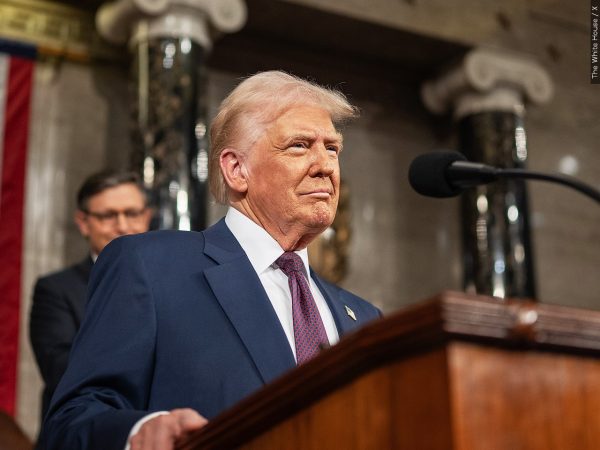
Liberation Day was created by President Donald Trump in which he imposed elevated tariff rates on more than 180 countries to boost domestic manufacturing in the United States.
“Jobs and factories will come roaring back into our country, and you will see it happening already,” Trump said during his Liberation Day speech on April 2, 2025, at the White House. “Ultimately, more production at home will mean stronger competition and lower prices for consumers.”
Trump voiced that every country has “ripped off” the U.S., defending his controversial economic independence efforts.
The tariffs imposed by the president are mainly defined as reciprocal; a tariff that is implemented in response to a country that imposed similar action. He added that he would be more “lenient” with the policies, explaining that not all of them would be reciprocal.
“The expectation is that it would grow manufacturing in the U.S. because people are going to want to buy at a relatively lower price than the after-tariff price from international products,” said Christopher Clark, an economics professor at GCSU. “So products that can be produced here can now be produced more often.”
Clark’s comment highlights Trump’s goals regarding Liberation Day. The other side of the spectrum involves a drive-up in input cost for domestic companies that use internationally produced products. Thus slowing down their output to consumers.
U.S. consumers take the hit directly due to the raised prices of Chinese goods. With that being said, there is a lower demand on these goods because less consumers are willing to pay the raised prices.
10% baseline taxes were directed toward nearly every country. The European Union, Cambodia and the United Kingdom are several examples of nations being affected the most by these higher tax prices.
However, Asian countries are the ones taking the hardest hit. China, specifically, has experienced a 140% incline in tariff rates. This means that goods imported from China experience a tax that is 140% of their actual value. Since fewer consumers are looking to buy more expensive goods, countries like China lose profit.
For example, an imported product from China that is $100 will face a $140 added charge, causing the product to rise to $240.
“All of the domestic production is going to increase, but will that be more important than the other effects these tariffs will have, like people losing their jobs?” said Caleb Duke, a sophomore Finance major.
Duke brings a question to the table that has been asked many times over in recent political conversations. Because of the increased inflation, businesses that are reliant on imports may not be able to afford to pay their workers.
Despite the multitude of negative outcomes, including job losses, some alternatives can combat these recent changes.
“It’s true that there may be short-term challenges, but the long-term benefits outweigh them,” said Kelby Anderson, a sophomore history major. “Higher prices might push consumers to buy American-made products, which will ultimately strengthen our economy. As for job losses, I think the focus should be on retraining workers for roles in growing domestic industries.”
Anderson acknowledges the challenges at hand but brings a solution to the table regarding job losses. Instead of assuming that these losses will be the definitive outcome, he comes up with a solution to train workers in order to compensate for the constantly changing economy. Additionally, he argues that although there are some disruptions, the domestic benefits outweigh them in the long-run.
Liberation Day proceeds with controversy and it is uncertain what exactly is to come, but with time it will be apparent. The sweeping tariffs may alter the economy in the short and long-term which is projected to introduce challenges, as well as benefits. Until then, the U.S. and other nations will have to adjust to the events following Liberation Day.

